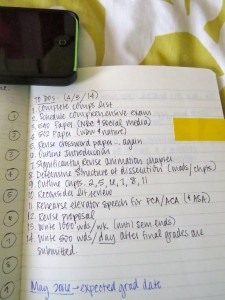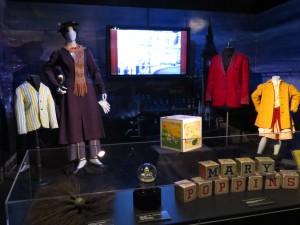Star Trek: Into Darkness; Monsters University; Fast and Furious 6; Despicable Me 2.
A curious trend has been sweeping the American film industry. Well, perhaps not that curious once one investigates further. While art-house film buffs and critics have bemoaned the end of American film for quite a while, the average movie-goer is also starting to wonder if the end isn’t near for the artistic side of the movie experience. It seems as if every movie at the multiplex is part of a larger franchise.
Has Hollywood run out of ideas? Doubtful. Certain filmmakers are still creating fantastic new worlds and weaving nuanced narratives that engage and excite. Woody Allen still produces an average of one film a year; Wes Anderson takes his time to sketch complex characters who live in deliberately-designed environments, right down to the perfect soundtrack. The only thing these directors are missing is the massive profits of their sequel-driven counterparts.
In May of 2012, Wes Anderson’s
Moonrise Kingdom, one of his best received films, made over $66 million worldwide on a budget of $16 million. Not bad. It profited and recouped its budget a few times over. It even tapped into some of the more elusive audiences, appealing to families with older children and teens. Earlier that same month, the superhero superband film
The Avengers came to theaters all over the country. On it’s budget of $220 million,
The Avengers made $1.5 billion worldwide. Billion. With a “B.” What did
The Avengers have going for it? Big stars? Well, while
The Avengers had Robert Downey Jr., Chris Helmsworth, and Scarlett Johansson,
Moonrise Kingdom had Bill Murray, Edward Norton, and Bruce Willis, who have all been attached to some huge movies in their careers. Big name director? Both Joss Whedon and Wes Anderson are pretty well-respected auteurs of creative films. Awards season fanfare? Both films were nominated for just one Academy Award, but won other industry honors.
The big difference between The Avengers and Moonrise Kingdom is how they translate abroad. If a film has nuanced dialogue that is difficult to translate (both in word and emotion), its worldwide appeal drops. Movies like The Avengers don’t rely on dialogue, but on impressive special effects, action-packed sequences, and characters with notoriety. The characters of The Avengers are already well-known, requiring no introduction. The Avengers is also essentially a giant sequel for about six franchises. Abroad, sequels are keeping Hollywood afloat.
Recently, on NPR’s
All Things Considered, Hollywood producer Linda Obst discussed her new book,
Sleepless in Hollywood. She has a lot of tales to tell, but she spent much of the interview discussing “the new abnormal.” As DVD sales have dropped off, a industry that used to comprise 50% of film revenue, Hollywood has shifted its attention to the profitable international market, which now makes up 80% of the market. Sequels are especially lucrative: While the profits on the
Ice Age films stayed the same with each release (still impressive), each sequel doubled upon the last internationally. As Obst put it, studio heads certainly understand the “business” part of “show business,” but they have lost the “show.”
Obst does not leave us without solutions. She suggests making one less “tentpole film,” or films that are guaranteed moneymakers such as the superhero movies or Harry Potter that support the industry financially, and using that $200 million to make a few more small films that attract more ignored audiences.
I would suggest using our consumer power to speak out, but only being 20% of the intended audience puts Americans at a disadvantage in that respect. Movie theaters and distributers need to re-democratize the movie-going experience as well.
The World War Z $50 ticket is a move in the opposite direction of what most movie-goers want or can afford. As ticket prices decrease, theaters will see increased audience numbers. Simple as that. Theaters should also bring back matinee, student, and other specialty pricing. Tap into the audiences that have the free time to see films with lower prices. Audiences will still come in large numbers to evening showings because that is when the average working American has the opportunity to see movies. That will not change. Additionally, with lower ticket prices, theaters will see increased activity at the concession stand.
Take, for instance, our local
West Shore Theater. It is a rehabbed 1940s one-screen theater that is packed most evenings. It only shows two movies a night, one at 7 and one at 9 or 9:30. Ticket prices are a reasonable $3.50, and concessions are just as inexpensive. I took my mother to see
The Hunger Games last summer for less than $10, including a drink and popcorn. In Philadelphia, its difficult to even get into the theater alone for less than $11. The West Shore Theater shows late / last run movies. For example, it is showing
Iron Man 3 and
The Great Gatsby this weekend, and
The Muppets (2011) for a charity fundraiser. The theater is attempting to raise funds for a digital projector, as most studios are converting to an all-digital format. The large numbers at the West Shore are evidence enough of what lowered prices will do for attendance.
Sequel-itis is just a symptom of a larger issue in Hollywood. There is no room in Tinseltown to be a risk-taker; if it isn’t a guaranteed profit maker, especially in the international sector, studios are reluctant. Even most of the art-films are helmed with veteren directors (Allen, Anderson, Mann, Coppola), so they have something of a built-in audience. Hopefully profits won’t bury one of America’s most important art forms, allowing creativity and quality to rule the day once more.
Additional Reading:












